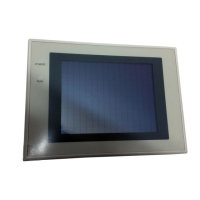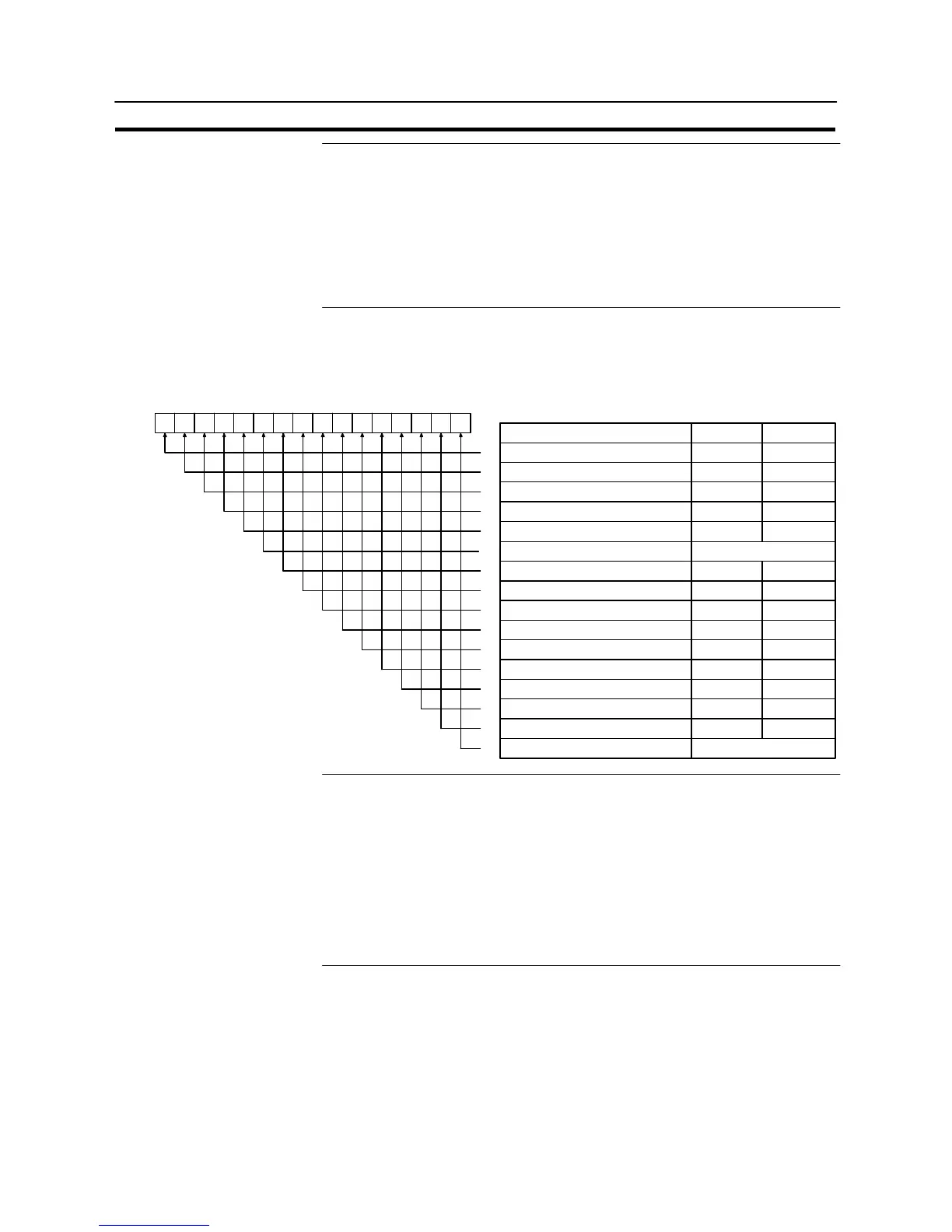269
Areas for Control/Notification
Section 7-2
Reference - What is designated here is the memory table number only. The type of memory
table (numeral/character string) is set by the “memory table copy type” bit in the
PT status control bits.
- Copying is not executed just be writing the memory table numbers. It is execut-
ed when the “memory table copy execution” bit in the PT status control bits is
turned ON.
- Since the memory table numbers start from 0, if there are 2000 memory tables,
the range is 0 to 1999, and if there are 1000, the range is 0 to 999.
S PT status control bits
The PT status control bits have the functions indicated below.
15 14 13 12 11 10 9 8 7 6 5 4 3 2 1 0 Bit
0
0
Controlled Item
Screen display
Processing priority registration (for NT link (1:N))
Continuous buzzer
Intermittent buzzer (short)
Display history initialization
Not used
Intermittent buzzer (long)
Backlight mode
Screen printing
PT window opening
Numeral/character string input
PT screen switching
Memory table copy execution
Memory table copy type
Alarm history initialization
Not used
1 (ON)
Performed
Registered
Sounded
Sounded
Performed
Sounded
Lit
Performed
Disabled
Disabled
Disabled
Performed
Numeral
Performed
0 (OFF)
Not performed
Canceled
Stopped
Stopped
Not performed
Stopped
Flashing
Not performed
Enabled
Enabled
Enabled
Not performed
Character string
Not performed
Always “0”
Always “0”
15
14
13
12
11
10
9
8
7
6
5
4
3
2
1
0
n+3ch
Reference - Since the statuses of the PT status control bits do not change even if the status
of the NT31/NT31C changes in accordance with the settings of attributes or
memory switches, the statuses of the PT status control bits may sometimes dis-
agree with the status of the NT31/NT31C. For example, the buzzer may be
sounding even though the “continuous buzzer” bit is OFF. In such a case, per-
form PT status control bit operations to achieve agreement with the status of the
NT31/NT31C.
- The PT status control bits are checked in bit units by the NT31/NT31C. The only
functions that are actually performed are those for which the corresponding bits
have changed in status.

